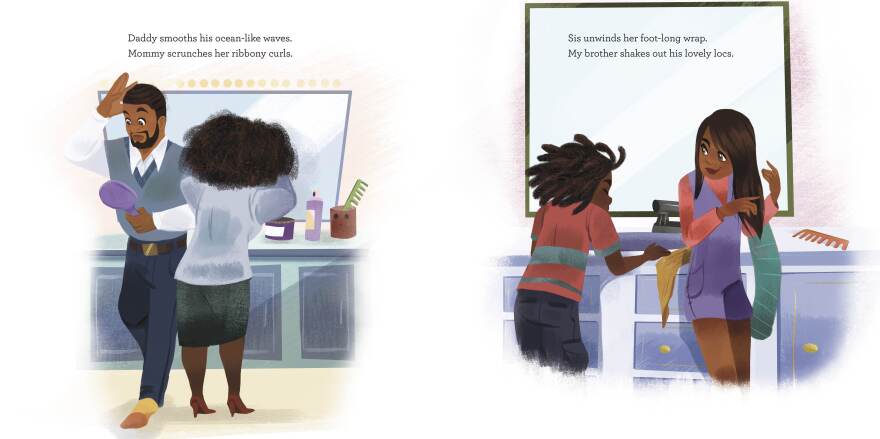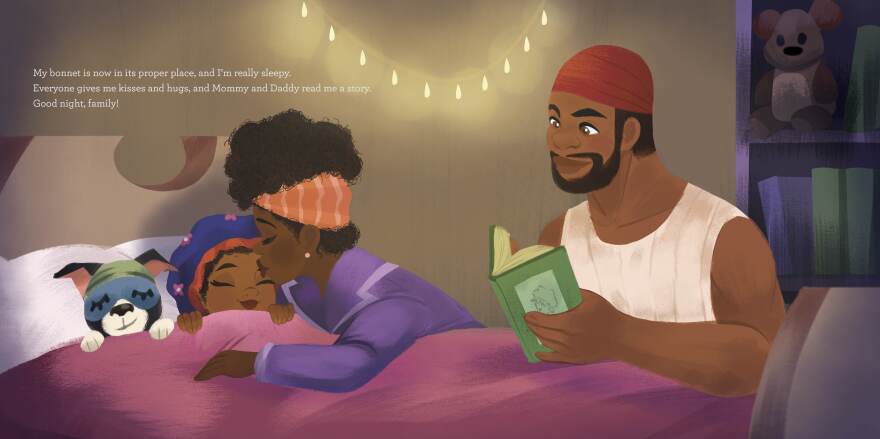When Nancy Redd's daughter was three years old, she started wearing a bonnet to bed. It's a "ubiquitous black experience that I grew up with, my mom grew up with, all my friends grew up with," Redd says — and yet it's one that she felt ashamed of as a kid.
"If the doorbell rang, I would immediately take it off — I didn't want anybody to know it existed," she recalls. "I didn't want my daughter growing up with that same shame."
But Redd couldn't find a book that celebrated black nighttime hair routines, so she wrote it herself.
In Bedtime Bonnet, a little girl enlists her whole family to help her find her lost bonnet before she goes to sleep. As the girl explains: "In my family, when the sun goes down, our hair goes up!"
Nneka Myers illustrated the story — and remembers that she didn't love her bonnet much either, when she was little. "I had a hard time really accepting I had to wear a bonnet compared to all my friends," she says.
Myers paid extra attention to the texture of her paintings — she had to illustrate the little girl's tight curls, the dad's waves, the brother's twists.
"One of the problems I have seen in children's books that express diversity in the past is how everyone looks the same ..." Redd says. "If you look at families, we're not all the same color. ... Families don't all match."
Myers used a wide range of colors and brushstrokes — she says it helped that she had a reference point "right in my living room."
The little girl in the story isn't named because Redd wanted her experience to feel universal. She says, "looking at these pictures feels like I'm looking at a photo album."
The routines and traditions of black culture get hidden, Myers says, so she was glad to help celebrate them in print.

"For the longest time we were expected to fit in: To not express our blackness ..." Redd says. "No matter how much joy we get from it in our private lives, our public life is entirely separate."
She hopes her daughter's generation will be able to be their true selves, in public and in private.
"Blackness is a 360-degree experience," says Redd. "And for my daughter, I wanted her to be able to enjoy and celebrate it and not feel any shame about any part."
Redd's daughter used to say "only old people wear bonnets," but she's now embraced the nighttime ritual as her own. And if that's all that comes of the publication of Bedtime Bonnet, Redd says she will consider that a success.
"My initial goal, which is to make my daughter comfortable with her black heritage and her need to wear a bedtime bonnet has been accomplished," she says.

Evie Stone edited this interview for broadcast. Beth Novey adapted it for the Web.
Copyright 2023 NPR. To see more, visit https://www.npr.org.






